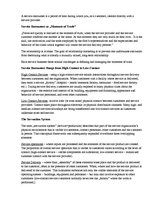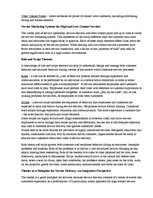-
Service Encounters
Role and Script Theories
A knowledge of role and script theories can help to understand, design and manage both customer behavior and emloyee behavior during a series of encounters which constitute service processes.
Roles – a role can be defined as „a set of behavior patterns learned through experience and communication, to be performed by an individual in a certain social interaction in order to attain maximum effectiveness in goal accomplishment”. In service encounters employees and customers each have roles to play. Employees must perform their roles with reference to customer expectation or risk dissatisfying or losing customers altogether. A customer must „play by the rules”, too, or risk causing problems for the firm, its employees or even other customers.
Scripts – a service script specifies the sequences of behavior that employees and customers are expected to learn and follow during service delivery. Employees receive formal training. Customers learn scripts through experience, education and communication. The more experience a customer has – the more familiar that particular script becomes.
…
A service encounter is a period of time during which you, as a customer, interact directly with a service provider. Service Encounters as „Moments of Truth” „Perceived quality is realized at the moment of truth, when the service provider and the service customer confront one another in the arena. At that moment they are very much on their own... It is the skill, the motivation, and the tools employed by the firm’s representatives and the expectations and behavior of the client which together will create the service delivery process.” The relationship is at stake. The goal of relationship marketing is to prevent one unfortunate encounter from destroying what is already a mutually valued, long-term relationship. Each service business faces similar challenges in defining and managing the moments of truth. Service Encounters Range from High-Contact to Low-Contact The Servuction System Service Marketing Systems for High and Low-Contact Services Role and Script Theories Theater as a Metaphor for Service Delivery: An Integrative Perspective Implications of Customer Participation in Service Creation and Delivery












